Top speed 782 km/h Wingspan 11 m First flight January 13, 1960 | Range 1,520 km Length 9.75 m | |
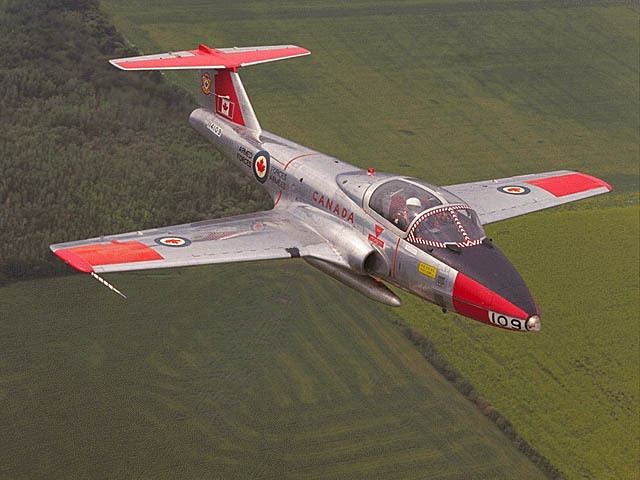 | ||
Canadair ct 114 tutor golden centennaires aircraft
The Canadair CT-114 Tutor (company model CL-41) was the Royal Canadian Air Force (RCAF), and later Canadian Forces, standard jet trainer, between the early 1960s and 2000. Designed and built by Canadair, it was ordered in September 1961.
Contents
- Canadair ct 114 tutor golden centennaires aircraft
- Canadair ct 114 tutor over wendover utah
- Design and development
- Operational history
- Aerobatics
- Variants
- Operators
- Aircraft on display
- Survivors
- Specifications CL 41A CT 114
- References
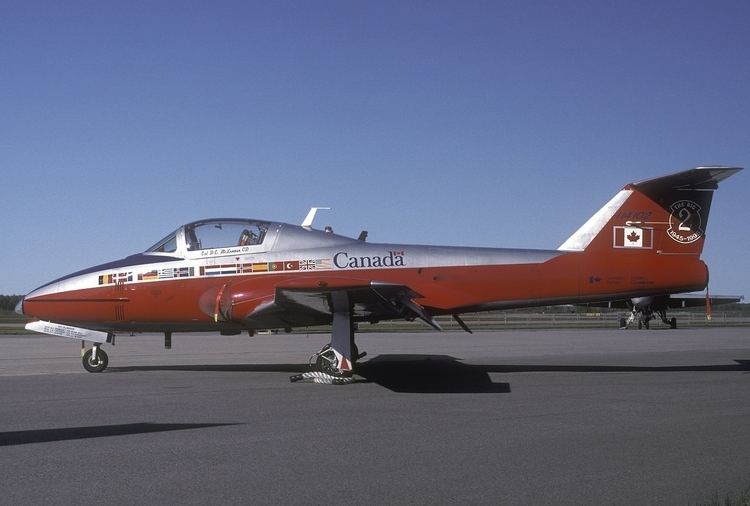
The Tutor served as the Canadian Forces primary jet trainer until it was replaced by the CT-155 Hawk and CT-156 Harvard II in 2000. The CL-41G model supplied to Malaysia was built as a ground-attack aircraft. The Tutor is currently still used by the Snowbirds aerobatics team.
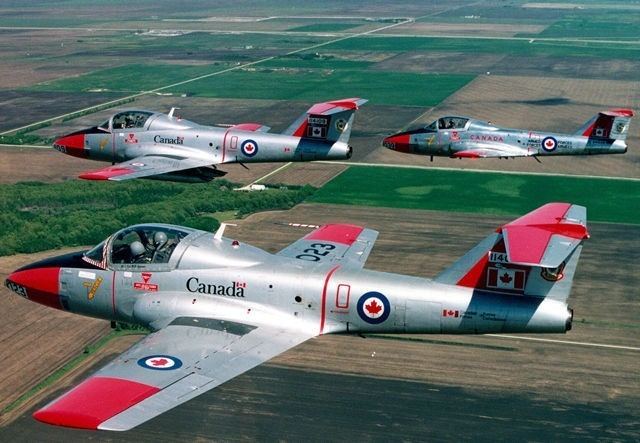
Canadair ct 114 tutor over wendover utah
Design and development
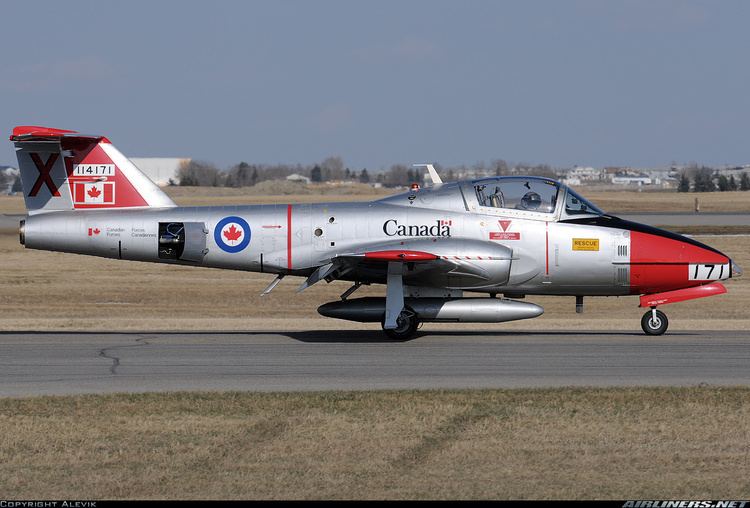
The CL-41 design was the product of the Canadair Preliminary Design department. The design incorporated a turbojet-powered, low-wing aircraft with a tricycle undercarriage and a T-type tail assembly. The flying controls are manual with spring tabs. The cabin, fitted with a rear-hinged canopy for both crew members, can be pressurized to a differential of 3 psi (20 kPa), the equivalent of about 2,000 m of altitude. It was designed to be a side-by-side trainer for providing elementary jet flight training and other training to an advanced level. The prototype first flew on 13 January 1960.
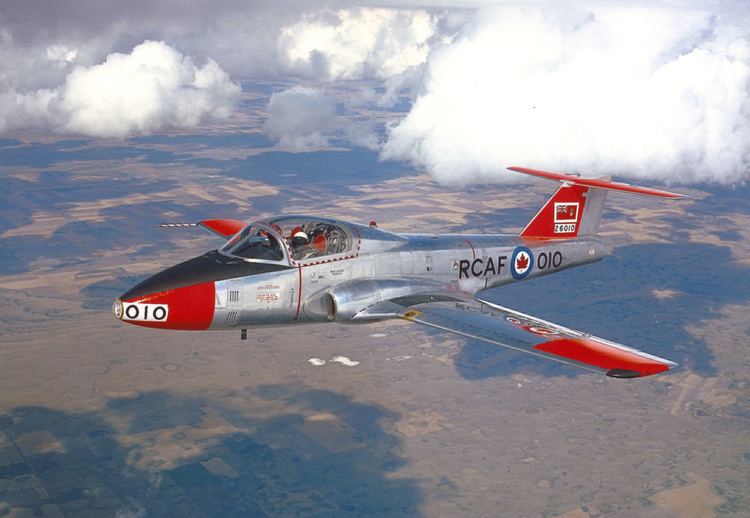
One critical area of design was the positioning of the vertical stabilizer (fin). The CL-41 was intended to demonstrate spin recovery. If the fin is too far forward, a spin cannot be initiated, but if it is too far aft, recovery becomes impossible. Model tests were done to find the optimum position. The original Tutor wind-tunnel model had a cruciform tail, which was revised to the T-tail design by removing the portion above the horizontal stabilizer.
Operational history

In September 1961 the Canadian government ordered 190 examples of the production variant, CL-41A for the RCAF as the CT-114 Tutor. The Tutor served for over thirty years as a primary trainer. In 1976, the Canadian Forces modified 113 remaining aircraft with upgraded avionics and provisions for two belly-mounted 41 US gal (155 l) external fuel tanks.

Canadair also developed an armament training and light attack variant, the CL-41G, with an uprated engine and underwing hard points to allow the carriage of external stores (up to 4,000 lb (1814 kg) of weapons) and drop tanks. In March 1966, the Royal Malaysian Air Force ordered twenty (serials M-22-01 to M22-11) examples of the CL-41G-5 Tebuan (which means Wasp in the Malay language) aircraft as counterinsurgency (COIN) aircraft. The Tebuan entered service in Malaysia in 1967, serving for over twenty years, before being phased out in June 1986 and replaced by the Aermacchi MB-339A.
One other variant was developed, the CL-41R which was fitted with an F-104 Starfighter nose as a proposed electronic systems trainer for future RCAF CF-104 pilots. A single airframe (CF-LTX-X) was built but the R model never went into production.
Aerobatics
In 1967, ten Tutors were modified for use as a formation aerobatic aircraft by the RCAF (and later the unified Canadian Forces) display team, the Golden Centennaires to celebrate Canada's centennial year. The display team was disbanded after the 1967 season. In 1971 a formation team was formed at 2CFFTS (Two Canadian Forces Flying Training School) at CFB Moose Jaw. In 1972 the name "Snowbirds" was chosen and in 1978 the team gained squadron status as 431 Air Demonstration Squadron, who continue to perform at air shows and special events including the annual flypast on Canada Day over the capital city, Ottawa.
Modifications for the Snowbirds include: a smoke generating system, a unique paint scheme for added crowd appeal, and a highly tuned engine to enhance engine response in low-level flying.
Variants
Operators
Aircraft on display
Survivors
Although the CL-41 Tutor has been retired from active training, 22 Tutors continue to fly with the Canadian Forces Snowbirds and the Aerospace Engineering Test Establishment at CFB Cold Lake. A number of airframes are held in reserve for future deployment as replacement Snowbird aircraft.
As of August 2011 there were three CL-41Gs and one CT-114 on the U.S. civil registry, but none registered in Canada.
A CL-41G was given to Embry-Riddle Aeronautical University in Daytona Beach, Florida by John Travolta in 2001.
Specifications (CL-41A – CT-114)
Data from Macdonald Aircraft Handbook
General characteristics
Performance
Armament
CL114 carry external fuel tanks
